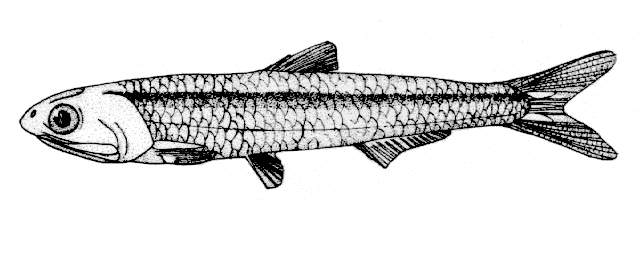| Engraulidae (Anchovies), subfamily: Engraulinae |
| 15.5 cm TL (male/unsexed) |
|
pelagic-neritic; marine; depth range 124 - 282 m |
| Western Atlantic: Massachusetts south to Florida and the northeastern Gulf of Mexico - at least to about Mississippi sound, but not recorded elsewhere; Venezuelan coast to northern Brazil at 2°19'N. |
|
Dorsal spines (total): 0-0; Dorsal soft rays (total): 13-16; Anal spines: 0-0; Anal soft rays: 13-18. Hardly differs from European anchovy (see E. encrasicolus) and can be identified from that description. Differs from Atlantic species of Anchoviella by its much longer pseudobranch (more than eye diameter and reaching onto inner face of operculum); differs from Atlantic species of Anchoa in its short and blunt-tipped maxilla (cf. pointed and reaching onto pre-operculum or beyond) (Ref. 189). |
| Common in shallow sheltered waters like harbors, etc., forming compact schools. Spawning peak is in July or August. Eggs are ellipsoidal (Ref. 189). |
|
Least Concern (LC); Date assessed: 24 August 2012 Ref. (130435)
|
| harmless |
Source and more info: www.fishbase.org. For personal, classroom, and other internal use only. Not for publication.

